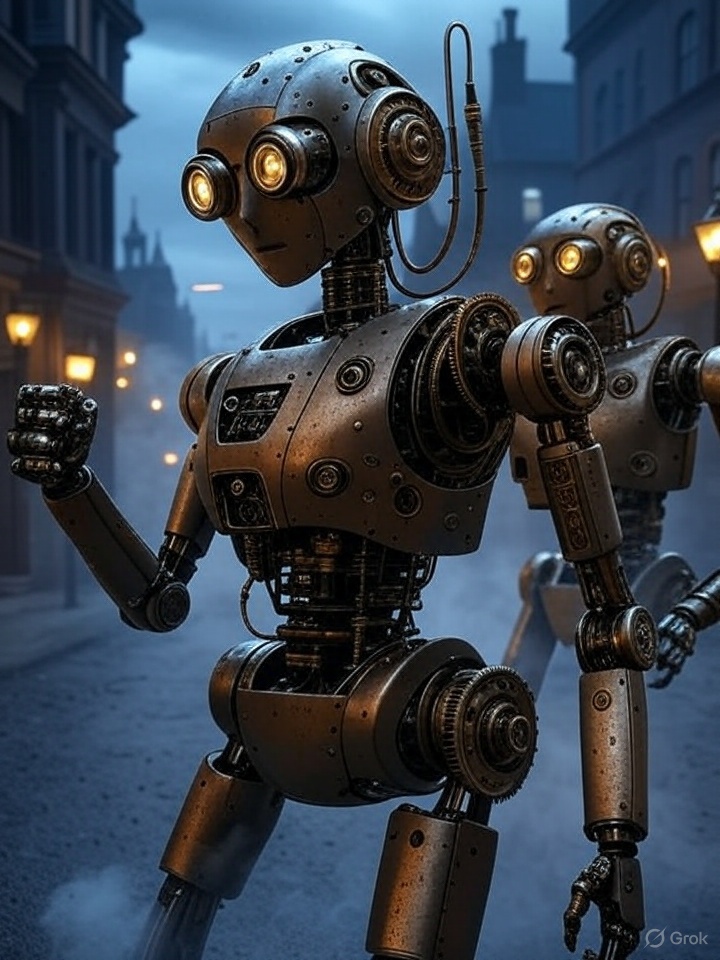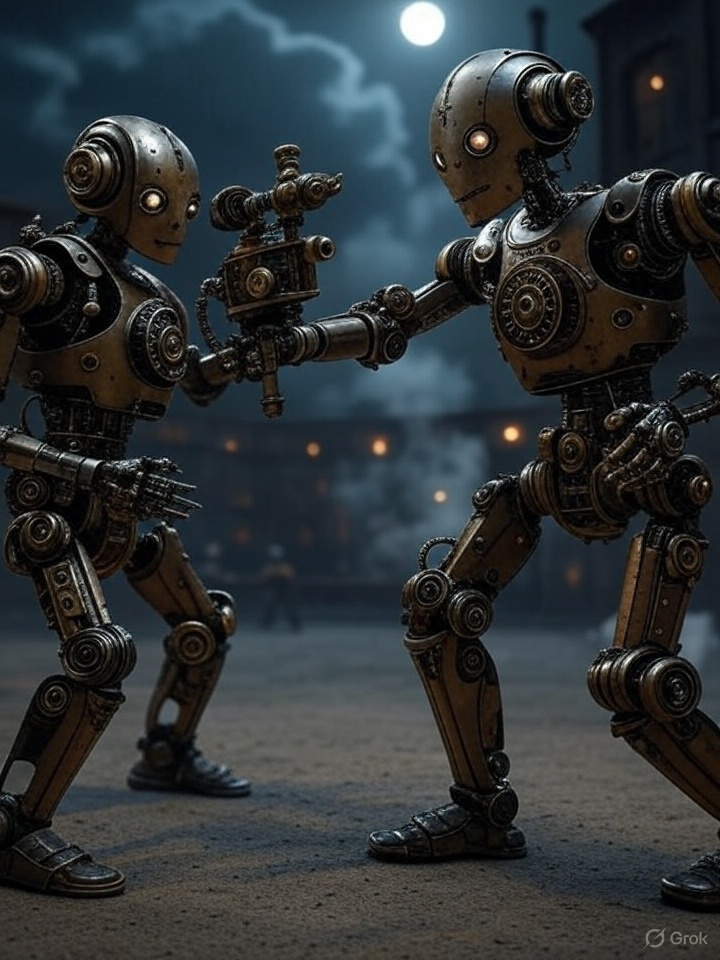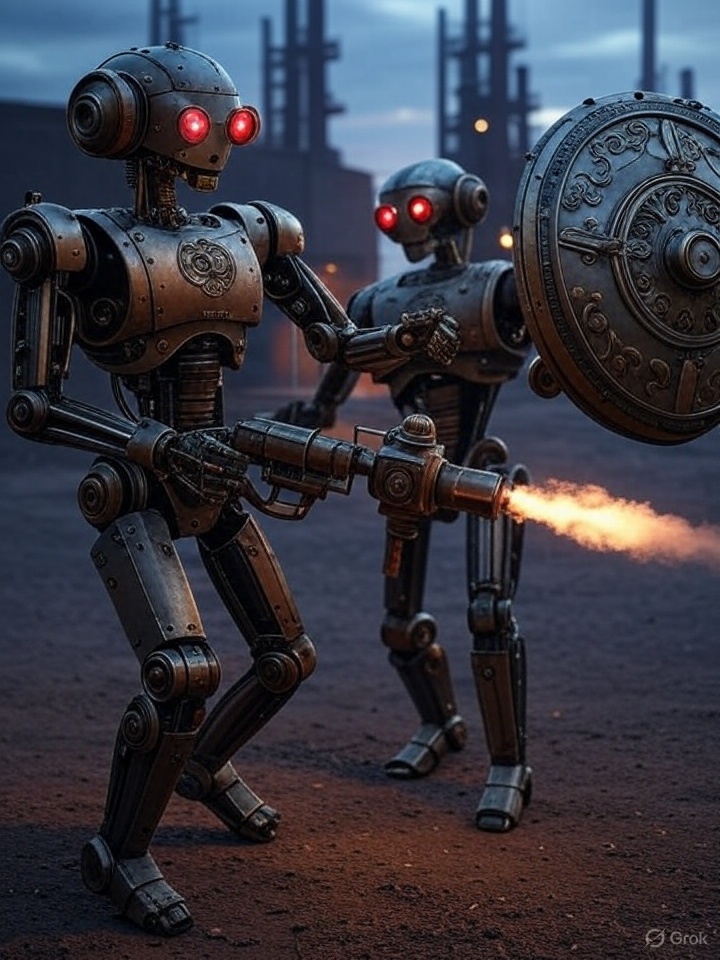In a groundbreaking moment for robotics and sports, Hangzhou, China, hosted the world’s first-ever humanoid robot fighting competition, the Mecha Fighting Arena Competition, as part of the CMG World Robot Competition series.
The event, which took place on May 25, 2025, showcased the remarkable capabilities of humanoid robots in a combat setting, blending cutting-edge technology with the thrill of martial arts.
The Robots and the Rules
 The competition featured several Unitree G1 robots, each standing at 1.3 meters tall—about the height of an average third-grader — and weighing 35 kg. With 23 degrees of freedom, these robots were designed for agility and precision, capable of performing complex movements like punches, kicks, and dodges.
The competition featured several Unitree G1 robots, each standing at 1.3 meters tall—about the height of an average third-grader — and weighing 35 kg. With 23 degrees of freedom, these robots were designed for agility and precision, capable of performing complex movements like punches, kicks, and dodges.
The matches were structured similarly to boxing: each round lasted two minutes, with judges awarding points for successful strikes. Penalties were given for falls or failure to recover, adding a layer of strategy to the bouts.
Unlike fully autonomous systems, the robots were controlled by human operators using handheld controllers. However, artificial intelligence played a crucial role in assisting with real-time balance adjustments, situational analysis, and evasive maneuvers.
This hybrid approach allowed the robots to maintain stability during strikes or misses, showcasing some impressive moves — like slick uppercuts and well-timed sidesteps — though not without a few humorous mishaps. In one memorable moment, a robot tripped over another that had already fallen, adding a lighthearted touch to the intense competition.
A Milestone in Robotics
 The Mecha Fighting Arena Competition marks a significant milestone in the development of humanoid robotics. Organized by Unitree Robotics, the event was broadcast live on Chinese television, including CCTV-10, and garnered international attention with coverage from outlets like CNN. Four teams participated, each controlling their robots in real-time, demonstrating not only the robots’ physical capabilities but also the skill of the operators behind them.
The Mecha Fighting Arena Competition marks a significant milestone in the development of humanoid robotics. Organized by Unitree Robotics, the event was broadcast live on Chinese television, including CCTV-10, and garnered international attention with coverage from outlets like CNN. Four teams participated, each controlling their robots in real-time, demonstrating not only the robots’ physical capabilities but also the skill of the operators behind them.
While the robots displayed remarkable feats of balance and coordination, the event also highlighted areas for improvement.
Some movements appeared slightly clumsy, and the occasional stumble underscored the challenges of replicating human-like agility in machines. Still, the competition offered a glimpse into the future of robotics, where such technology could extend beyond entertainment into fields like disaster response, manufacturing, or even assistive care.
The Winner and What’s Next
The victor of the tournament, Liu Xing, earned a spot in the finals of the CMG World Robot Competition—an impressive achievement, though no additional prize was awarded. The lack of a tangible reward didn’t dampen the significance of the event, which has sparked discussions about the potential for humanoid robot competitions to become a mainstream spectacle, akin to e-sports or drone racing.
 Also read:
Also read:
- Chinese Robotaxis Expand Globally
- Not Quite Terminators: Robots Lag Behind Humans in China’s First Half-Marathon Showdown
- Chinese Humanoid Robot by EngineAI Masters Iconic "Axe Gang" Dance from Kung Fu Hustle
Looking Ahead
The Mecha Fighting Arena Competition in Hangzhou is just the beginning. As robotics technology advances, we can expect future iterations to feature more autonomous systems, faster movements, and perhaps even larger-scale events.
For now, this pioneering competition has set the stage for a new era of robotic entertainment, blending human ingenuity with machine precision in a way that’s as thrilling as it is innovative.
The future of robot combat is here — and it’s only going to get more exciting.






